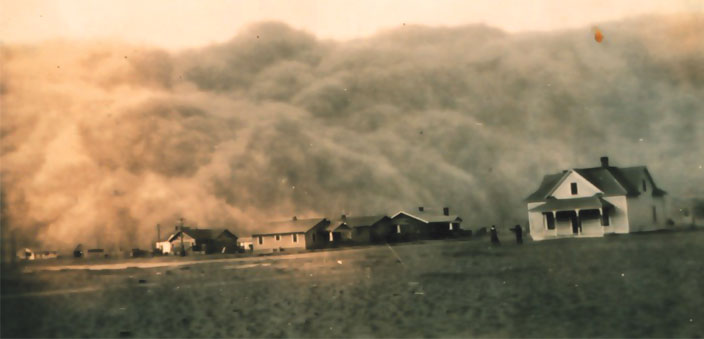The Great Plains of USA – Kansas, Oklahoma, Texas, Colorado and New Mexico – witnessed a prolonged drought in the 1930s. With the land getting little or no rainfall, crops failed for almost a decade. The soil turned to dust which blew over large distances in billowing dark clouds, some even reaching New York.
On April 14, 1935, known as Black Sunday, a series of dust storms hit the region, turning day into night. Visibility was so bad that people could not see five feet ahead of them! The next day, a newspaper reporter called it the Dust Bowl of the continent and the name stuck.
The Dust Bowl was primarily caused by faulty farming practices. The grasses which normally held the soil in place had been replaced by farms. When the crops failed, strong winds blew off the exposed top soil, giving rise to dust storms or Black Blizzards.
Life became very difficult. Children wore dust masks to school. Every home was covered in a thick layer of dust. The disaster left millions of acres of farms useless – farmers, rural businesses and even county governments faced financial ruin. It triggered an exodus of people from the farmlands to other states. They came to be called Okies.
Rainfall returned to normal in 1941 and the land became prosperous once more. The Dust Bowl imparted an important lesson in soil conservation and modern farming techniques.

